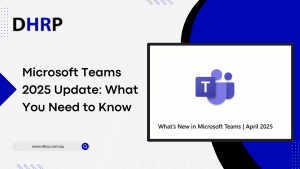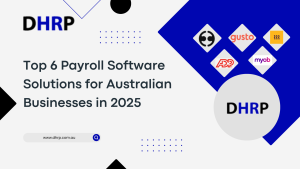Microsoft Dynamics is at the top of the game with its new features. Security is a very important key in FO and cloud in general and Microsoft Dynamics has revolutionised this.
Remember, we cannot deny that our organization centres around Microsoft Dynamics 365 Finance & Operations (D365FO). So, both our internal and external threats need to keep this application secure. Protection is a continuous exercise and does not stop as soon as a device goes live, and user roles and rights are set. As you learn the security roles in dynamics 365 finance and operations, let’s talk about the Dynamics 365 security tips.

Tips for the security along with the d365 security roles list
Security role in finance and operations will support your application securely, identify, and learn how to add a user in dynamics 365 finance and operations, minimize task segregation risk incidents, and more. In this article and part 1, we will discuss Security reporting and security set up tips for you.
Let’s begin with it and learn everything we need to know about finance and operations roles.
Security Reporting:
1. Reviews users regularly and their accessibility
Security is not something you only implement once. Security is not stagnant – people shift within the organization, taking a holiday, and leaving the business. The market climate will also evolve through business processes and new laws and regulations in your sector.
Companies should review each user’s function and rights of access annually to ensure appropriate access privileges are assigned to the right people.
While these reviews should be left to the IT department, they must be done under the guidance of the business process owners (BPOs). BPOs are better aware of how access privileges for each position should work.
Since each access privilege(understand d365 privileges)has different risk levels, it is good to review the security roles assigned in high-risk areas as they are most likely to affect your financial or audit risk.

2. Reduce Administrators
One common way to security roles to a user is to offer them privileges for system management. While SysAdmin still helps users to do their jobs, this, however, poses significant security threats, compromises your data integrity and raises the possibility of segregation of duties (SoD). Not every one of your users or teams needs the same level of access to a record and there should be varying field level of security.
The best way to reduce your SoD exposure is to minimize SysAdmins. Furthermore, reducing the number of administrative users and avoiding over assigning multiple security roles and can also save you money on user licenses as SysAdmin requires a corporate-level license automatically. In contrast, the user may only require an operation or team members license.

3. Build a report for audit and evaluations on system administrators
Generally, the auditor’s first report is, ‘Who has access to the system administrator, and what have you been doing? ”
You can use the user function to see who is assigned the duties of system administrator assignment Report:
System Administration > Inquiries > Security > User Role Assignments
Microsoft suggests applications of fewer than 5 systems Administrators.

Security Setup
4. Be aware of the Pros and Cons of Utilizing Default Security Layers
D365FO has created out-of-the-box user roles and privileges. Using these default positions, the user can provide quick and easy provision compatibility. However, from a practical point of view, Microsoft’s designed certain roles and rights that do not comply with SoD.
Until granting those to users to reduce SoD danger, it is necessary to understand the responsibilities and privileges of default roles.

5. Build new roles using existing permissions
D365FO lets you build custom protection layers within default roles. The development of individual roles helps you to delegate each role’s rights and to minimize sodium risk. DHRP offers a security matrix that allows you to construct these individual functions by showing you the business processes that a user can perform.

6. Understand D365FO Object Types
You should be aware of the device objects and which objects can be allocated if you’re responsible for protection in D365FO.
Menu Items: Three types of menu items are most commonly delegated to the privilege level: screens, outputs, and actions.
Tables: Table objects are tables where data is stored, which apply to SQL tables.
Data Entities: To encapsulate a business definition, data entities are a composition of data from several SQL Tables.

7. Know the Access styles and levels
Security configuration access styles are hierarchical, from the least to most open activities:
- Reading, updating, making, and deleting (used for Menu Items, Tables, and Data Entities)
- Invoke – (used for Service Operations)
For each access class, access levels can be assigned:
- Unset – Normal state
- Refusing – specifically denying access and overriding the user’s access form
Fellowships
- Offer the user access to the form of access.

8. Remember to Add Company Restrictions
By default, the position of the consumer is accessible to any company or legal person. In the sense of F&O., To ensure that users do not have access to particular organizations, entities should be limited specifically.

9. Using the least privilege technique for security
Least privilege protection is the idea that a minimum amount of access to specific records and data should be given to users for a job mission.
Top-down and Bottom-Up are two common security model approaches to the provision of user roles using LSP.
- Top-Down supply uses default positions and deletes access privileges before the least privilege principle has been respected.
- Bottom-up supply generates users’ personalized protection by adding those privileges before meeting the minimum degree of privilege.
A third approach is to use a top-down and low-up mix within the company with the low-risk approach.

10. Don’t worry about extendable data security (XDS)
XDS allows administrators to restrict user access to an object and access the objects corresponding to a particular parameter or parameter set.
For instances where you want to limit salespeople to see only the buyers or sellers in the region or area protected by them, limiting the user view to particular items may be advisable.

Bottom Line
These tips can help you understand more about the Dynamics 365 finance and operations security roles list. We at DHRP are making all possibilities to ensure the best security measures for you. So, if you want to get the consulting services regarding the d365 finance and operations audit trail, we are here for you!




































































































